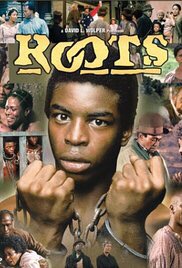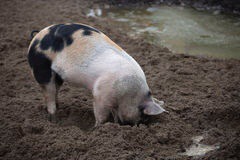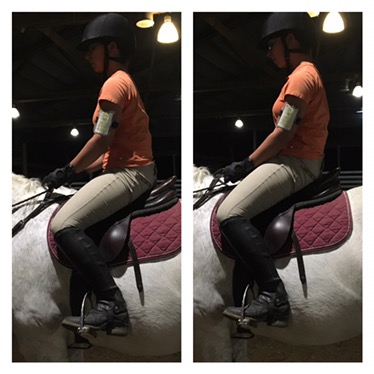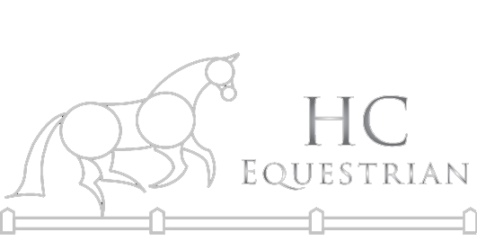So you know what they say about wombats, right?
 A wombat eats roots and leaves.
A wombat eats roots and leaves.
Or
 A wombat eats, roots, and leaves.(For those of you unfamiliar with the slang, “roots” means has sex)
A wombat eats, roots, and leaves.(For those of you unfamiliar with the slang, “roots” means has sex)
I’ve got two horses in my barn that are wombats. Brio is fat (eats), tries to mount the other horses (roots), and breaks away when longing (leaves).Brio is making progress via a diet, and longing in the lass-rope halter.
The other wombat is one of our makeover thoroughbreds, Blue. He eats because he needs to gain weight.
To be fair, he quit leaving. He used to casually wander off when I let go of his lead. He turned a corner a couple weeks ago and now chooses to hang out with me when I let go of his lead. He has become my partner, instead of an insolent pupil.
The rooting in Blue’s case refers to pulling his head and neck straight down when being ridden. Us horse people call this rooting. I don’t know why.
 Perhaps a rooting horse is searching for his favorite root vegetables?
Perhaps a rooting horse is searching for his favorite root vegetables?
 Or desperately checking to make sure there are no trip hazards in his path?
Or desperately checking to make sure there are no trip hazards in his path?
 Or maybe suffering some Kunta Kinte style angst?
Or maybe suffering some Kunta Kinte style angst?
 The term rooting probably refers to rooting in the mud like a pig. It looks about the same.
The term rooting probably refers to rooting in the mud like a pig. It looks about the same.
In my experience horses root in order to exert some sort of control over their riders.
Before you begin to address your horse’s rooting, be sure that you aren’t contributing to the issues. First, make sure that you aren’t balancing on your reins. Check to see if you can ride with super loose reins. Then make sure you can maintain an even contact in all gaits. Ensure that your tack is comfortable for the horse, a horse might root to evade an ill-fitting saddle, or a bit that pinches. If you have any doubts or questions about these areas, consult your trainer.
My first approach to correct rooting is to treat it as an innocent game the horse is playing with his rider. Horsey thinks it is fun that he can pull his head down and he has trained his rider to pull back on the reins in response. It is something for him to do while making those monotonous laps around the sandbox.
In this instance I find the best cure for rooting is to simply not participate in horsey’s game. When I anticipate a root coming, I release my reins before the root begins so that the horse never gets to feel like he’s in charge of the amount of contact on the bit. For green horses, I find this cures them of this habit within a couple weeks. Starting here will also reinforce the independence of your seat and hand.
 Blue tried to root, but found no contact to pull against. He was rewarded with a “good boy” to encourage him to stretch down.
Blue tried to root, but found no contact to pull against. He was rewarded with a “good boy” to encourage him to stretch down.
Then there are the not-green horses. The horses who are well established in their pattern of rooting and pulling. These are the ones that are trying to pull you out of the saddle and get you to do a front flip over their heads.
These ones need to meet their own pressure and pull against themselves.
When you anticipate a root, change your posture. I call this “doing the ashamed puppy.” Imagine that you have been a very bad boy and tuck your tail between your legs. Now when the horse pulls on you, you will be pulled deeper into the saddle instead of forward. Some horses give up rooting at this point. Their game is no fun if they cant win by unseating you.
 Marie in her ordinary seat on the left and in the ashamed puppy position on the right
Marie in her ordinary seat on the left and in the ashamed puppy position on the right
If precious horseykins is still pulling on you, ride with your reins in a bridge. Make sure your reins are pushed down into the horses neck. When he pulls, the pressure on his sensitive mouth will change by exactly the amount he pulls. When he’s done pulling, the pressure is exactly the same as it was before the pulling began. Your rein length did not change. His rooting had very little effect on you, which is no fun for him.
 You can either hold both reins in both hands (double bridge) or
You can either hold both reins in both hands (double bridge) or
 You can hold both reins in your planted hand and your other hand can hold the rein normally (single bridge). If you do this style of bridge it is best to make your outside hand the one holding both reins.
You can hold both reins in your planted hand and your other hand can hold the rein normally (single bridge). If you do this style of bridge it is best to make your outside hand the one holding both reins.
If the rooting persists, it’s time to”pull the trigger.” When horseypooh is getting ready to root, grasp both reins in your left hand, and use that hand to push down on his neck. With your right hand, pull up on the excess rein, effectively shortening the reins, then close your right hand firmly around the reins. Hold this short rein until the horse gives by lightening the pressure on the bit. Repeat as necessary.
 Kristin pulls the trigger, she is planting her right hand, which is better for people with stronger left hands.
Kristin pulls the trigger, she is planting her right hand, which is better for people with stronger left hands.
So back to the weird title of this post,”From wombat to WIMBAT.” A WIMBAT is a horse that is Welcome In My Barn Any Time. I’m happy to say both of my wombats are well on their way to becoming WIMBATs.


